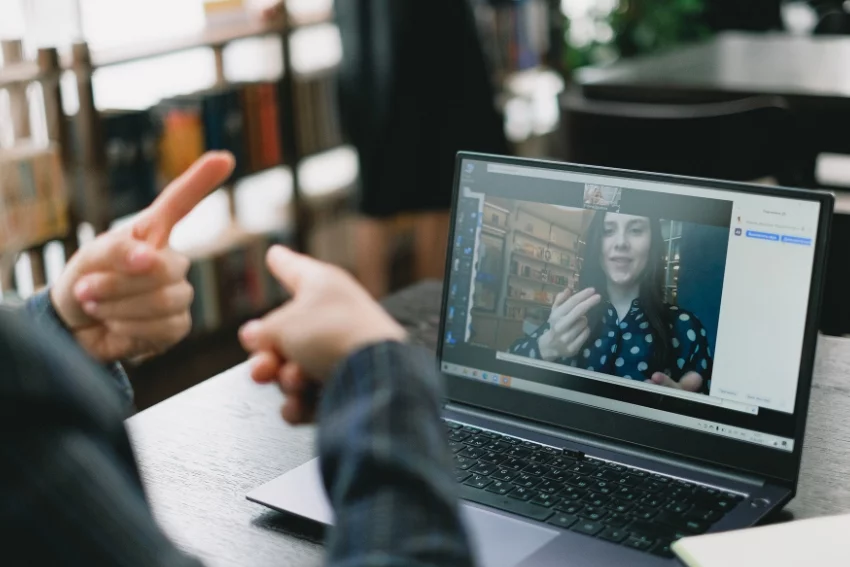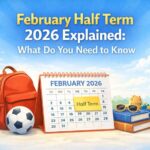Top 9 Revision Techniques for GCSEs & A-levels
How Early Should You Start Revising for GCSEs and A-levels?
Revising for GCSEs and A-levels can be a daunting task, especially with so much material to cover and so little time. It’s never too early to start revising, especially if you want to do well 📚. Many students find it helpful to begin revising several months before, as this allows them to spread their workload out over a longer period of time. It’s also a good idea to check the summer exam timetable so you know exactly when your exams are and can plan your revision accordingly. Effective revision often requires a variety of tools and approaches. To maximise your online learning, you should discover top GCSE revision websites that support these revision techniques.
Flashcards
Flashcards are a popular study tool that can be used for revision. They are cards with a question or prompt on one side, and the answer on the other side. You can create your own flashcards or use pre-made ones. Then, you can go through the flashcards by looking at the question or prompt and trying to recall the answer. If you are unable to recall the answer, you can flip the card over to see the correct answer, and then try to remember it for next time.
Flashcards can be an effective tool for revision because they allow you to test your knowledge in a targeted way. By going through the flashcards and trying to recall the answers, you are actively engaging with the material and reinforce your understanding of it. This can help you retain the information better than simply reading or reviewing the material alone.
Notetaking (If Done Correctly) 📑
Note-taking is a useful technique for revision because it allows you to organise and condense the material you are studying. By taking notes, you are actively engaging with the material and summarising it in your own words, which can help you better understand and remember the information.
However, it is important to take effective notes in order to get the most benefit from this technique. Some people may try to make their notes look pretty or artistic 🎨, which can actually be a distraction and hinder their ability to learn the material.
It is more important to focus on the content of the notes and ensure that they are clear and concise. This can be achieved by using headings and subheadings to organise the information. You can also use abbreviations and symbols to save space. However, if you feel artsy, go for it! They are your notes after all 🤫.
Effective note-taking also involves actively listening and engaging with the material as you take notes. This means paying attention to what is being said and asking questions to clarify any points that are unclear. By engaging with the material in this way, you will be more likely to retain the information and understand it more fully.
The Pomodoro Technique 🍅
The Pomodoro Technique is a time management method that was developed by Francesco Cirillo in the 1980s. The technique involves working in focused intervals, known as “Pomodoros,” followed by short breaks.
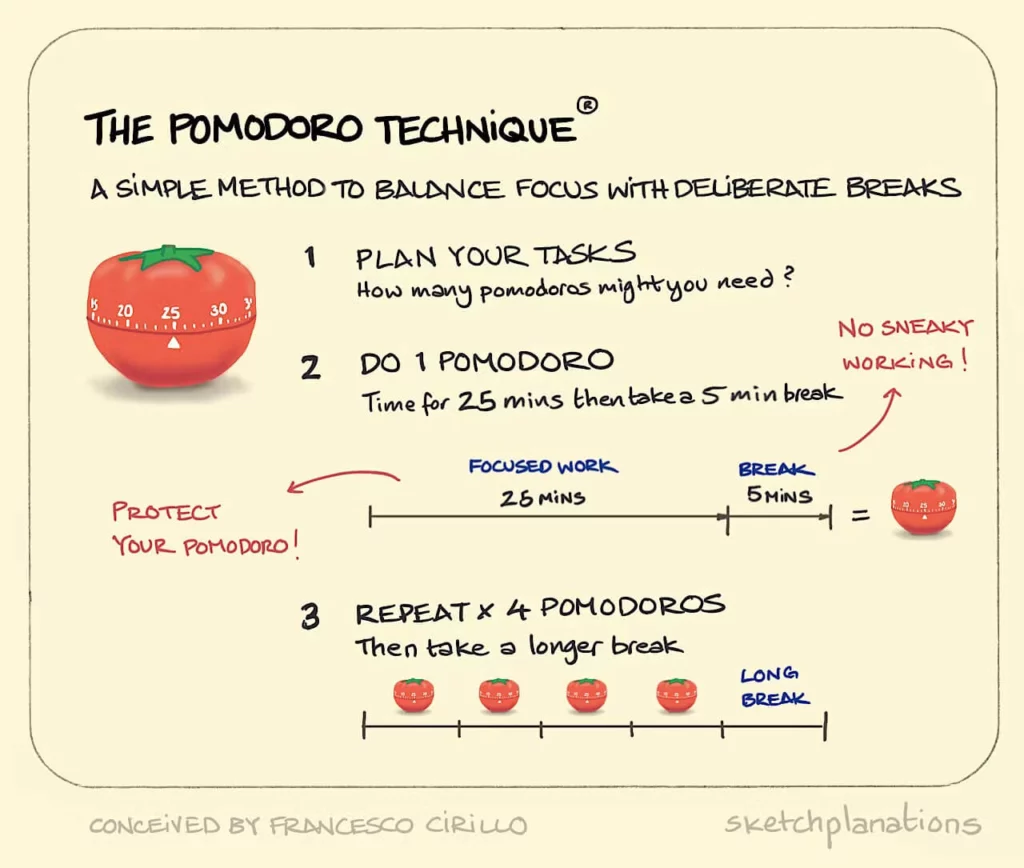
How to Use the Pomodoro Technique for Revision?
- ✍️ Choose a task that you want to work on, such as reviewing a chapter of a textbook or writing an essay.
- ✍️ Set a timer for 25 minutes, which is one Pomodoro. This is the time that you will work on the task without any distractions.
- ✍️ Work on the task for 25 minutes, focusing on it as much as possible.
- ✍️ When the timer goes off, take a short break (5-10 minutes) to stretch, get a drink, or do something else to relax.
- ✍️ After the break, start a new Pomodoro and repeat the process.
- ✍️ After completing four Pomodoros, take a longer break (15-30 minutes).
The Pomodoro Technique can be effective because it allows you to focus on a task for a specific amount of time, and then take a break to rest and recharge 💤. This can help you avoid burnout and stay motivated to continue working. By dividing your revision into smaller, focused intervals, you can also make progress on a task without feeling overwhelmed.
Blurting Method – Does Blurting Really Work?!
The Blurting revision method is an easy and effective technique for quickly reviewing and retaining information. This method involves reading a section of a textbook, exam specification, or study guide, then closing the book and writing down as much information as possible from memory. This helps to solidify the information in your mind and allows you to identify areas where you need to focus your revision.
This method is also referred to as a “memory dump” as it aims to retrieve as much information as possible from the memory. It is said that it was made popular by a content creator named Unjaded Jade, and it was said that it helped her to achieve impressive grades in her GCSEs and A-levels.
Some students claim that it’s an effective method to use during exam revision, but it is always recommended to try different methods and find what works best for you. 🤷♀️
Cornell Method 📝
The Cornell Method is a note-taking and study technique that was developed by Professor Walter Pauk of Cornell University. It involves dividing a sheet of paper into three sections: a narrow left-hand column, a wider right-hand column, and a small section at the bottom.
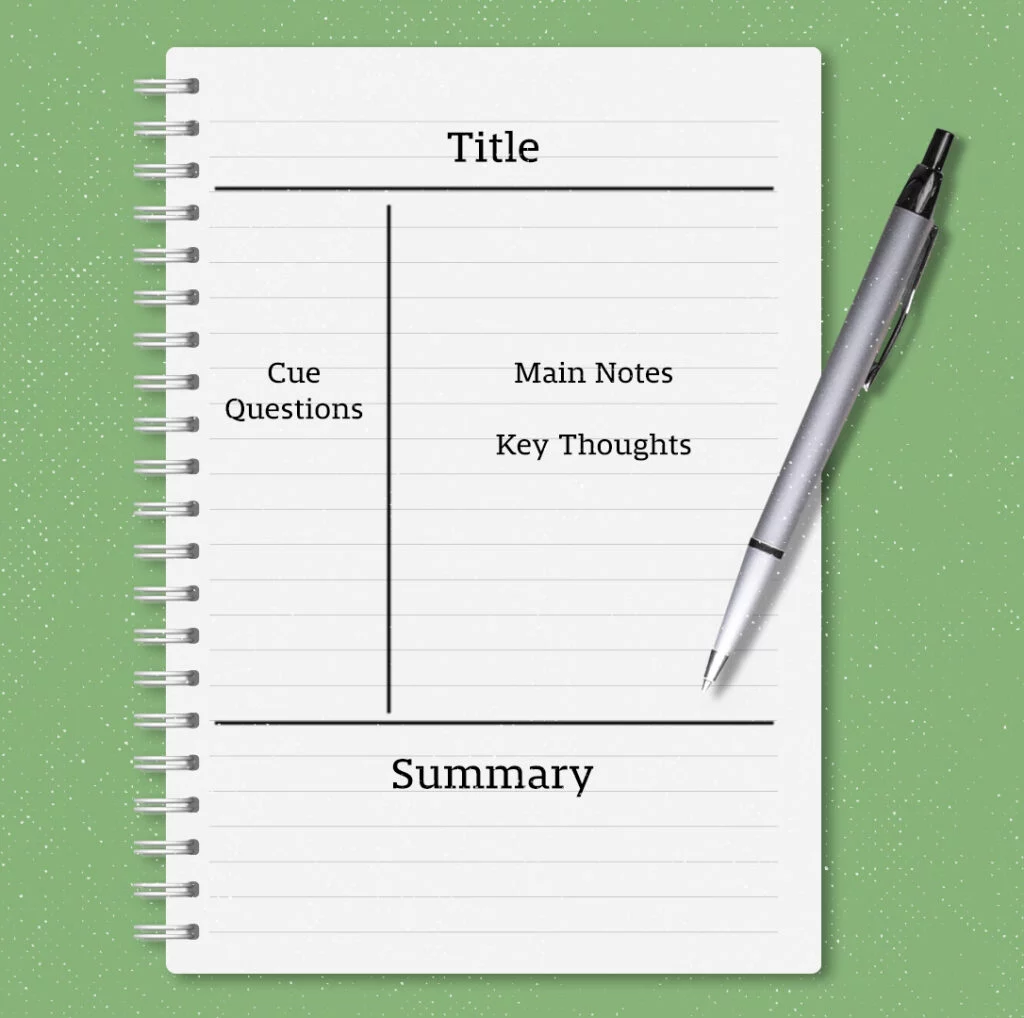
How to Use Cornell Method?
- ✍️ Take notes on the right-hand side of the page while reading or attending a lecture. Focus on writing down key points and main ideas, using abbreviations and symbols to save space.
- ✍️ After you have finished reading or attending the lecture, review your notes and draw a horizontal line after the last key point. This line divides the notes into two sections: the main ideas and the supporting details.
- ✍️ In the left-hand column, write a summary of the main points of the material. This summary should be brief and should only include the most important information.
- ✍️ In the small section at the bottom of the page, write a review question or prompt that tests your understanding of the material. This could be a question that you will answer after completing a set of notes, or a question that you will use to test your knowledge when reviewing the material later.
The Cornell Method can be an effective study technique because it helps you organise and condense the material you are studying. By summarising the main points and reviewing your understanding of the material, you are actively engaging with the material and reinforcing your understanding of it. This can help you retain the information better than simply reading or reviewing the material alone.
Mind Maps 🗺
A mind map is a visual representation of ideas and information that is organized around a central concept or theme. Mind maps can be an effective tool for revision because they allow you to visually organize and connect related ideas, which can help you better understand and remember the material.
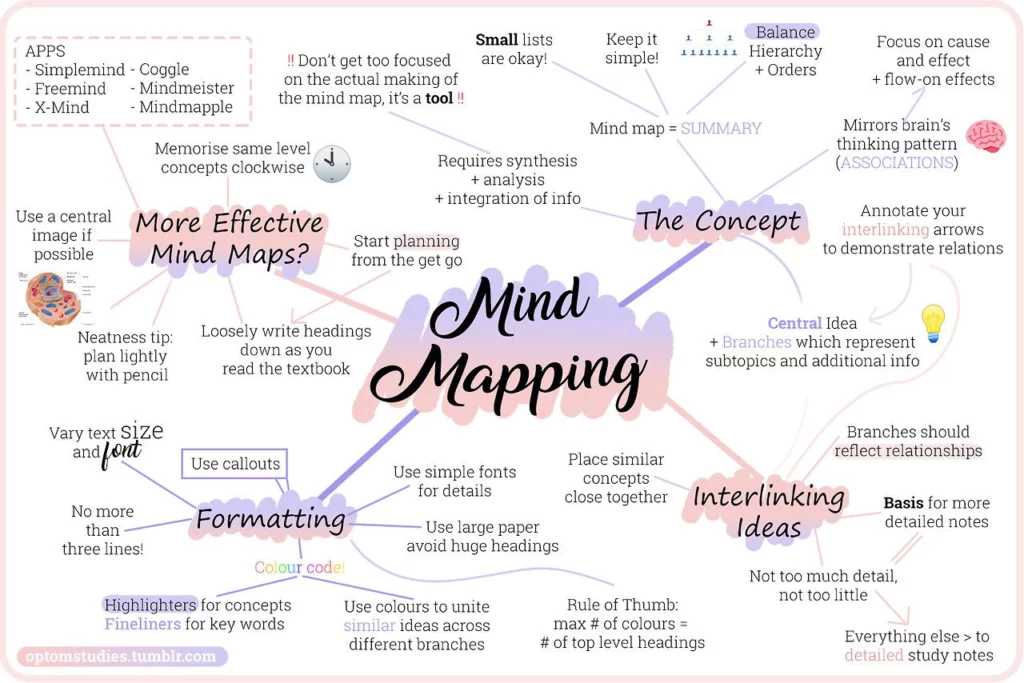
How to Use Mind Maps for Revision?
- 🗺 Choose a central concept or theme that you want to revise. This could be a specific topic, such as a chapter in a textbook, or a broader subject, such as a course.
- 🗺 Write the central concept or theme in the centre of a blank piece of paper or whiteboard.
- 🗺 Draw branches coming out from the central concept, and write main ideas or subtopics on the branches.
- 🗺 Add additional branches and sub-branches as needed, connecting related ideas and organizing them in a logical way.
- 🗺 Use different colours, symbols, and images to represent different ideas and relationships. This can help make the mind map more visually appealing and easier to understand.
- 🗺 Review the mind map regularly to reinforce your understanding of the material. You can do this by reviewing the mind map on its own or by using it as a reference while reviewing other materials.
Watching Youtube?!
Watching YouTube can be a useful revision method if you use it to supplement your studies and review material that you are already familiar with. For example, you might watch YouTube videos on a specific topic to get a different perspective on the material, or to see examples of the concepts being applied in real-world situations.
To use YouTube effectively for revision, it is important to use it in a targeted way. This means identifying specific videos or channels that will be helpful for your revision, rather than just watching any videos that catch your attention. You should also use YouTube in conjunction with other revision techniques, rather than relying on it as your primary method of revision.
How to Use Youtube for Revision?
✔️ Search for specific topics or concepts that you want to review. Look for educational channels or videos that explain the material in a clear and concise way.
✔️ Watch the videos all the way through, rather than skipping around or only watching part of them. This will help you get a complete understanding of the material.
✔️ Take notes as you watch the videos, summarizing the key points and writing down any questions or points that you want to clarify.
✔️ Review the notes you took after watching the video to reinforce your understanding of the material. You can also use the notes as a reference while reviewing other materials.
Doing Past Papers
Using past papers as a revision technique is a good idea because it allows you to practice answering questions and solving problems in a format that is similar to the actual test or exam. This can help you become familiar with the types of questions and the format of the test. This can reduce test anxiety and increase your chances of performing well.
In addition to that, past papers help you to identify your weaknesses and areas where you need to improve, it also allows you to track your progress and measure your knowledge retention over time.
Here are some tips for using past papers effectively:
- ✔️ Start by finding past papers for the test or exam you will be taking. These can usually be found on the website of the organisation that administers the test, or by searching online.
- ✔️ Begin by attempting the easier questions first, and gradually work your way up to the harder ones.
- ✔️ Time yourself while doing past papers, this will help you get a sense of the time constraints you’ll face on the day of the actual test or exam.
- ✔️ Review the answers and explanations provided in the past papers and compare them to your own answers. This will help you identify any mistakes or misconceptions you have about the material.
- ✔️ Repeat this process regularly, and aim to improve your performance on the past papers with each practice session.
- ✔️ Use past papers as a gauge for your preparation. If you are doing well on them it is a good sign that you are prepared for the actual test, if you are struggling it is an indication that you might need to review certain topics more closely.
Revising with Friends
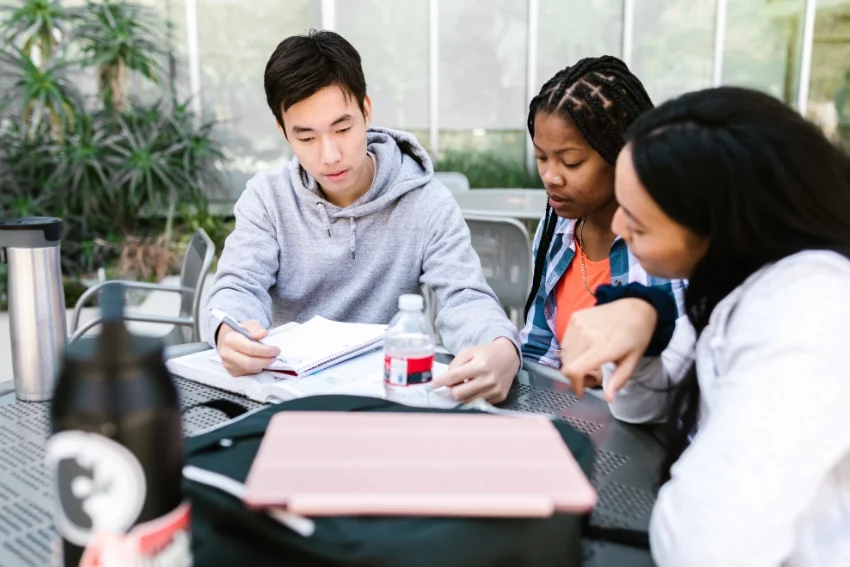
Revising with friends can be a good revision technique for several reasons:
- ✔️ Social accountability. When you revise with friends, you are more likely to stay on track and stick to your revision schedule because you are accountable to others. This can be especially helpful if you are someone who is easily distracted or tends to procrastinate.
- ✔️ Peer-to-peer teaching. When you explain a concept or idea to someone else, it can help you better understand and remember the material. This is because teaching others is a powerful way to reinforce your own learning and solidify your understanding of the material.
- ✔️ Collaborative problem-solving. By working on problems and questions with friends, you can collaborate to find the answers, and you can learn from each other’s approaches. This can be especially helpful for subjects that require a lot of problem-solving, like maths or physics.
- ✔️ Encouragement and motivation. Having someone else to revise with can also be motivating and encouraging, especially when you are feeling demotivated. It can also be helpful to have someone else to celebrate your progress with and to give you feedback on your performance.
To make the most out of studying with friends it’s important to plan your study sessions in advance, decide on a specific topic or area to focus on, and assign roles or take turns leading the discussion. Additionally, it’s important to keep a positive and respectful environment and make sure that everyone is on track and focused.
How to Revise Effectively for GCSEs and A-levels?
Revising for GCSEs and A-levels can be challenging, but with the right techniques and resources, you can make it much more manageable!💪 First and foremost, creating a study schedule and breaking up your revision time into manageable chunks is essential. This allows you to stay on track and cover all the material you need to. Additionally, try to utilise a variety of resources such as textbooks, notes, and online resources. You can join online communities on Reddit, The Student Room, and TikTok to connect with other students and get tips and support.
It’s important to take breaks and maintain a healthy balance between studying and relaxation. This can prevent burnout and help you stay focused. Practice with past papers, sample tests, and quizzes, as it will help you to understand the format of the exam, and what you should expect. Finally, stay organised and keep your notes, flashcards, and other study materials organised and easily accessible.
It’s important to experiment with different revision techniques and find what works best for you. Everyone learns differently and you have to find the best method for YOU. However, if you find yourself struggling to understand a certain topic or if you need extra help to reach your goals, don’t hesitate to seek out the guidance of a tutor.


